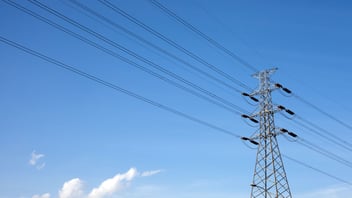How To Read Your Atlantic City Electric Bill

If you’re a commercial or industrial customer in our New Jersey service area, you’re likely to get your utility bill from one of several companies. In this guide, we’ll look at the utility bill details for Atlantic City Electric (ACE). For reference, we’ve explained some typical language on your bill, like how to read kilowatt-hours (kWh).
Here’s a step-by-step guide to what’s on your bill, what the supply and transmission rates mean, and what you need to know as an ACE customer.
What Your Atlantic City Electric Bill Includes
A typical ACE bill is divided into several sections:
- A 22-digit account number located on page 2 (starts with 0550).
- Account Information: Includes your account number, service address, and billing period.
- Summary of Charges: Shows your previous balance, payments received, current charges, and the total amount due.
- Usage History: A bar graph or table displays your electricity usage over the past 12 or 24 months, helping you track trends and unusual spikes.
- Detailed Electric Charges: Breaks down your charges for the current billing period, including meter readings, number of billing days, and whether you’re on summer or winter rates.
- Payment Coupon: The portion you return if paying by mail, pre-printed with your account details.

Supply Rate vs. Delivery (Transmission) Rate
- Supply Rate: This is the price per kilowatt-hour (kWh) for the electricity you consume. If you haven’t chosen a third-party supplier Like Catalyst Power, ACE purchases electricity for you through a competitive process, and the cost is passed directly to you. This is called Basic Generation Service (BGS).
- Transmission Rate: Part of the delivery charge, this covers the cost of transporting electricity over long distances before it reaches your local grid.
We did a full breakdown of supply and delivery charges on the blog.
Other Key Bill Components
- Distribution Charges: The cost of delivering electricity from substations to your business, including local infrastructure and customer service.
- Adjustment/Surcharges: These may include state-mandated fees, renewable energy program charges, or infrastructure investments.
- Electric Vehicle Credits: If you have an electric vehicle and use ACE’s approved charging equipment, you may be eligible for off-peak usage credits.
Key Takeaways for ACE Customers
- Know Your Charges: Your bill is split into supply (the electricity itself) and delivery (getting it to you). Delivery charges remain the same even if you switch suppliers; only the supply rate changes.
- Compare Supply Rates: You can shop for competitive suppliers to potentially lower your supply rate. The New Jersey Board of Public Utilities maintains a list of approved suppliers.
- Track Your Usage: Use the usage history section to monitor your consumption and identify ways to save.
- Understand Rate Plans: Consider if a different rate plan (like Time-of-Use) could save you money based on when you use electricity.
Tips for Managing Your ACE Bill
- Consider Energy Efficiency Programs: To help you save.
- Contact Customer Service: If you have questions or need assistance.
| Key Takeaways |
|
|
By understanding each part of your ACE bill, you can make smarter decisions about your energy use and find opportunities to save. For more details, visit ACE’s website or contact their customer service.



